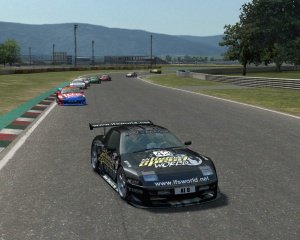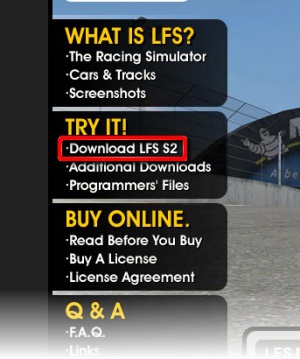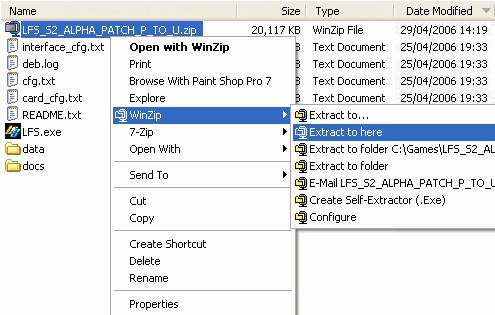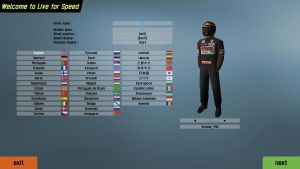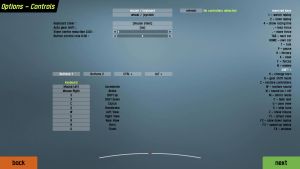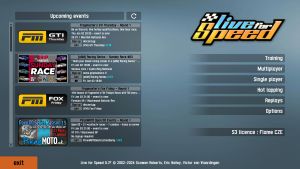「はじめに」の版間の差分
| 207 行 | 207 行 | ||
=== コーナーの権利に関する規則 === | === コーナーの権利に関する規則 === | ||
| + | CR-1: 権利があるそれらの内部で追い立てるか、または彼らがあなたの余地の中に残すと予想する角の適切な回転に達する前にあなたは先で車とのかなりのオーバラップを確立しなければなりません。 かなりのオーバラップが、あなたの車の態度が中でドライバーの位置を言うために少なくとも、上がっているのを意味する、前方に、車、--それは少なくともそうです。 あなたには、いくつかの事情での、より多くのオーバラップがたぶんあるべきです。 前方に、ドライバー、彼が床に入る前にどんなかなりのオーバラップもなかったなら、少しも干渉なしで彼らの選択のレース線に完全に心がけるべきである権利を持っています。 | ||
| + | |||
| + | CR-2: 十分なオーバラップが適切な回転の前に確立されるなら、背中ドライバーは十分なサイドスペースに権利があります。 そして、先では、ドライバーは背中ドライバーの十分なサイド余地を残さなければなりません。 | ||
| + | |||
| + | CR-2A: 外部の車には、8211が外で角と#を通るいっぱいに同居する権利があります; ちょうど出口まで、指してください。 出口ポイントに向かった外部に対してそれらを絞るべきではありません。 | ||
| + | |||
| + | CR-2B: 内部の車は余地にちょうど出口ポイントまで角を通るいっぱいに権利があります。 頂点領域に向かった内部に対してそれらを絞るべきではありません。 前方に、ドライバーは、もちろんまだ位置を得るために戦うことができますが、背中ドライバーのサイド部屋を維持している間そうしなければなりません。 行く習慣が内部を上げる、前方に、車、彼らが既にあったところに床に入った後に、時々適切な回転がはしけと呼ばれた通過することであることの前にいいえがかなりのオーバラップを確立した、(すなわち、あなたはやり方を過ぎてはしけで運びます。) はしけの通過があなたと他のものの両方のための高いリスク操縦であることを理解してください。 あなたには、はしけのパサーとしてのいかなるどんな権利もありません。 操縦を通過するはしけからの事故を引き起こすと、異議を申し立てられると、あなたは無防備な立場にいるでしょうか? | ||
| + | |||
| + | CR-3: どこ、前方に、ドライバー、明確に、どんな先在のオーバラップもあったかどうかにかかわらずドライバーの後ろのaが当然の警告と注意でそれらの位置を攻撃するかもしれないのを一時的な移動に保証することができるくらいの誤りをしたか。 例えば - 先では、ドライバーは、あまりに遅く、ブレーキをかけて、頂点で広い状態でゆっくり動いて、次に、速度などを減少させなければなりません。 オーバラップを先在させるのがあったかどうかにかかわらずこれは有効な一時的な機会でしょう。 しかしながら、まだ、接触を避けるためにすべての必要な注意を払うために、追いついているドライバーの上にかなりの責任があります。 小さい誤り、先では、ドライバーはしかしながら、攻撃の一時的な移動を正当化するとは十分でないかもしれません。 まさしく、前方に、ドライバー、得る、時には形が崩れているしばらくは彼らのそばを明白な状態で通る自動右か同居する右をあなたに与えません。 あなたは、彼らの誤りが安全なパスが行われることができるくらいの機会を提供するかどうかまだ判断しなければなりません。 | ||
CR-1: You must establish substantial overlap with the car ahead before they reach the corner’s turn-in point to have the right to drive up their inside, or to expect them to leave inside room for you. Substantial overlap means at least that the front of your car is up to say the driver’s position in the ahead car - and that’s at the very least. You probably should have more overlap in some circumstances. The ahead driver has the right to be fully committed to the racing line of their choice without any interference if there was no substantial overlap before he turned in. | CR-1: You must establish substantial overlap with the car ahead before they reach the corner’s turn-in point to have the right to drive up their inside, or to expect them to leave inside room for you. Substantial overlap means at least that the front of your car is up to say the driver’s position in the ahead car - and that’s at the very least. You probably should have more overlap in some circumstances. The ahead driver has the right to be fully committed to the racing line of their choice without any interference if there was no substantial overlap before he turned in. | ||
| 216 行 | 225 行 | ||
CR-3: Where an ahead driver has clearly made a sufficient error to warrant a passing move a behind driver may attack their position, with due caution and care, regardless of whether there was any pre-existing overlap. E.g. - If the ahead driver brakes too late and drifts out wide of the apex and then has to reduce speed etc. This would be a valid passing opportunity regardless of whether there was pre-existing overlap. However, there is still substantial responsibility on the overtaking driver to take all necessary care to avoid contact. Small errors by the ahead driver may not be sufficient to justify an attacking passing move however. Just because the ahead drivers gets a bit out of shape at times doesn’t give you an automatic right to pass uncontested by them or a right to room. You still have to judge if their error provides sufficient opportunity for a safe pass to take place. | CR-3: Where an ahead driver has clearly made a sufficient error to warrant a passing move a behind driver may attack their position, with due caution and care, regardless of whether there was any pre-existing overlap. E.g. - If the ahead driver brakes too late and drifts out wide of the apex and then has to reduce speed etc. This would be a valid passing opportunity regardless of whether there was pre-existing overlap. However, there is still substantial responsibility on the overtaking driver to take all necessary care to avoid contact. Small errors by the ahead driver may not be sufficient to justify an attacking passing move however. Just because the ahead drivers gets a bit out of shape at times doesn’t give you an automatic right to pass uncontested by them or a right to room. You still have to judge if their error provides sufficient opportunity for a safe pass to take place. | ||
| − | |||
| − | |||
=== 守備的ドライビングに関する規則 === | === 守備的ドライビングに関する規則 === | ||
2008年3月19日 (水) 13:22の版
Welcome
Live for Speed S2へようこそ。最新版のリアルなオンライン・レース・シミュレーションは、Scawen Roberts、Eric Bailey、そしてVictor van Vlaardingenによって製作されました!
このマニュアルは、LFSを始めたばかりの方、また、S1バージョンからやっている方にも、 ゲームをセットアップする上で役に立つでしょう。また、いろいろな車種のドライビングをマスターするのにも役立つでしょう。
あなたがすでにLFSに精通していて、インストールとセットアップなど、いくつかの最初の章をスキップしたいかもしれませんが、ドライビング・ガイドや応用セッティング・ガイドは、あなたのドライビング・スキルと、レースに勝利するのために読まれることをお勧めします。前置きはこれぐらいにして、それでは始めましょう:
Gentlemen, start your engines!
LFS S2について
LFS S2は本格的なレーシング・シミュレーターです。アーケード・モードは無く、ステアリング・アシストもついていないので、実際の車のような感覚で運転しなければなりません。したがって、ステアリング・コントローラでプレイするとことを非常にお勧めします。キーボードやマウスでもプレイ可能ですが、ステアリング・コントローラは実車の操作に近く、本格的なレース・シミュレーターをプレイするなら使うべきでしょう。特にオンラインでは、素早い操作が必要です。
S2ではシングルプレーヤーモードでAIを相手に一人でレースをすることができます、しかし、マルチプレーヤーモードでは、本当の楽しみがオンラインであることに気づくでしょう。世界中の人々とのレースは最高のものです。LFSなら簡単に出来るでしょう。オンラインにはたくさんのレースリーグが存在していて、競争相手には困りません。
リアルなレースのスリルと楽しみを実現するには、非常に優れた物理学の計算が必要です。これは、レースにとって重要である全ての運動をシミュレーションすることになります。LFS S2はシミュレーションとはなんであるかという、我々のビジョンに対する第2のステップであって、すでにかなりの精度で実現されており、高い評価を得ています。
それは多くの面でカバーされてます。- 広範囲にわたるセットアップ、燃料消費、タイヤの磨耗、多くの異なる路面のタイプ、興味をそそるレース用の環境、異なるクラスの車など。これら全ての面は、コース上を走ることによって確認できるでしょう。
それから、ピットストップの計画を忘れないでください。- あなたの車がコースでどれくらいの燃料を使うか、そして、あなたのドライビングスタイルで、タイヤがどのように磨耗するかを発見してください。実際のレースで考えなければならない全ての要素は、S2でも同じように考える必要があります。
S2は、S1に比べて重要な特徴が加えられました。たとえば、ダイナミック・キャンバー(サスペンションの改良とサスペンション・タイプ別による違いのシミュレーション)、非常に詳細なタイヤ物理学・ダメージモデルの導入、また、S1は『中高速』の車両とトラックでしたが、S2ではいくつかの『速い』クラス(そして、若干の『遅い』車両も)を導入しました。
インストール
ウェブサイトからLFS S2のzipファイルをダウンロードして、Windows標準の解凍プログラムか、他の解凍プログラム(WinZipやWinRARなど)で任意のディレクトリーに解凍してください。これでもう準備ができています!使いやすいようにデスクトップにLFS.exeファイルのショートカットを作成してもいいでしょう。
LFSは、CDからも利用可能です。LFSをインストールするために、CDをドライブに挿入してください、インストールが自動的に始まります。自動的に始まらない場合は、『マイコンピュータ』からLFSのCDが入っているドライブをダブルクリックして、setupをダブルクリックして下さい。インストールが始まったら、スクリーンの指示に従ってください。
インストールが終わったあと、なるべく公式LFSサイトhttp://www.liveforspeed.net から最新のパッチをダウンロードして下さい。これらのパッチはバグの修正をしていたり、新機能が追加されているかもしれません。
パッチのインストール
- Live for Speedがインストールされているフォルダにパッチをダウンロード
- 右ボタンをクリックして、「ここへの解凍」を選んでパッチを解凍し上書き
- LFS.exeを実行
はじめかた
インストールと、最新のパッチのインストールが終わると、すぐにLive for Speed S2を始める事が出来ます。
イントロの直後に、基本的な情報の入力画面が表示されます。名前やナンバープレート、速さと圧力の単位、言語、右ハンドルか左ハンドルかを選択するよう尋ねてきます。また右側のドライバーの下の矢記しをクリックしてモデルを変えることができます。
ヘルメットの色は、規定の中から選ぶことが出来ます。あるいは、『HE-TDUK』(使用中のスキンの名前)をクリックすることによって、オリジナルのヘルメットデザイン(スキン)を選ぶことができます。オリジナルスキンの作り方はスキン作成 チュートリアルで説明されています。
すべてを入力し終わったら『Next』をクリックして下さい。
次の画面で、あなたの最初の車(XF GTI)が表示されています。もしLFSをアンロックしていない場合は、全ての車に乗ることが出来ません。
右上にある色のついたボタンで単色のボディーカラー、文字が書いてあるボタンでスキンを変更できます。
ボディーとホイールの色をを自由にカスタマイズするには、下にある「New colours」で新しい名前を入力し、セッティング項目の「colours」で変更できます。その下の項目でドライバーや燃料などを載せた状態を表示できます。矢印キーを押すと、車を回転させることができます。
全てのセッティングが終了したら『Next』をクリックして下さい。
コントローラー
ここでは、コントローラーの設定をします。デフォルトではマウスになっています。よろしければ『Next』をクリックして下さい。Live for Speed S2をプレイするにはフォースフィードバック対応のコントローラを推薦します。もし手元にあるならば、今すぐ設定しましょう。 少しの努力で快適にプレイできます!
『Wheel/Joystick』をクリックして、ボタンとホイールの軸に機能を割り当てます。ステアリングから始めましょう。中段あたりの『Axes/FF』の中から最初の項目『Steer』クリックして下さい。あなたがホイールを回すと、左側のバーのうちの1本が動いているはずです。その状態でバーの横の○○axesのボタンをクリックしてください。
つぎに、アクセルとブレーキも同じ方法で割り当てます。もしアクセルまたはブレーキが逆方向になっていたら『invert』をクリックして修正してください。その他詳しい説明はOptionsを参照して下さい。もし間違った設定をしていても後から変更できるので安心してください。全てのセッティングが終了したら『Next』をクリックして下さい。
しばらくするとメインメニューが表示されます。メインメニューでは、ゲームモードやリプレイ、オプションを選べます。
Live for Speed S2の全ての機能を使用するにはアンロックする必要があります。もし今すぐ走りたい場合は『Single player』を選んで『GO』をクリックします。すると、あなたはBlackwood GPサーキットのスタートラインにGTIのシートに座っていることに気づくでしょう。あなたが最初の数ラップで、サンドトラップに突っ込みナメクジ状態になったとき(最初これは誰にでも起こります)その時は、Escキーを押して、メインメニューに戻って下さい。
アンロック
LFSをアンロックするには、公式のウェブサイト http://www.liveforspeed.net に登録する必要があります--スタートページの上部のCreate A New Accountをクリックして下さい、そして、ユーザ名、Eメールアドレス、および国籍などの情報を入力してください。 パスワードは確認のため二度入力して下さい。 パスワードは慎重に選ぶべきです。
もしあなたがvoucherコードを送ったなら、そのページに入ることができます。 Submitをクリックすれば、アカウント検証のリンクが書いてあるメールが送られてくるでしょう。 このリンクをクリックした後に、あなたのアカウントが作成されます、そして、自動的にログインされるでしょう。
(メモ) http://www.lfsforum.net (公式フォーラム)と http://www.lfsworld.net (LFS-Worldオンライン統計)で同じユーザ名とパスワードでログインできます。
登録後、あなたの選んだ方の支払い方法を使用しているvoucherコードまたはライセンスを買うことができます。
そして、右上の角でS2が表示されていると、S2をアンロックすることができます。
現在、あなたはLive for Speed S2をアンロックする準備ができています。あとはユーザーネームとパスワードを入力するだけです。
Welcome to Live for Speed S2!
(注意) LFSをアンロックするには、インターネットに接続する必要があります。接続のバンド幅は重要ではありません。一度アンロックされれば、全ての機能がオフラインでも使用できます。あなたが最初にライセンスを買ったとき、あなたは最高3回までアンロック出来ます。これは、2台のコンピュータをアンロックするのと、1つのスペアです。その後、毎月あなたはもう一つのスペアを受けます(最高2個)。もしあなたがWindowsを再インストールするか、コンピュータをアップグレードすれば、いつでもLive for Speedをアンロックすることができます。
オンラインレースをプレイするにあたって。CRCとは?
あなたは「クリーン・レーサーズ・クラブ(CRC)」という言葉を耳にしたことはあるでしょうか?
CRCはオンラインレースのコミュニティでよく重んじられています。
これらのルールは、オンラインレースのガイドラインとして広く認められていて、車をドライブする以上必ず守るよう努力しなければなりません。
あなたが他の人を非難する前に考えてください。
オンラインレースをプレイしていると、非常に競争心をあおられ、熱中し強いストレスを感じる場合があります。
事故・アクシデントはレース経験の一部です。ごくたまにラグ(回線の遅れ)によるものもあります。 例えばレース中に電話のベルが鳴り出したり、家族の誰かが話しかけてきたりすることは、よくあることです。
最も明確なルールは以下の通りです。
- 軽率なドライブはしない。
- 常に相手のレーサーを尊敬すること。
- 慎重になること。
- 少しの忍耐を示すこと。
- 自分のドライビング技量を理解して、状況に応じて運転すること。
オンライン上でのレースは必ずしも現実世界のレースと同じではありません。
場合によっては、オンラインレースは現実のレースよりも多くの気配りが必要かもしれません。
挨拶はきちんとしましょう例:hi/byeなど。
フラッグの意味
・イエローフラッグ:前方に事故車、若しくは低速車がいる。注意せよ。 ・ブルーフラッグ:自分が周回遅れで、後方から快速車あり。ラインを直ちに空けよ。譲れ。
そして、おそらく最も重要なルールは、
- 前を走る車に衝突しない。
- 追突の責任は常に後を走っていたドライバーにある。
何度も読み返してください。スタートして最初の1コーナーで真っ先に思い出して下さい。
忍耐を学んで下さい。我々は決して羊の群れではないのです!
レース規則
規則を知ること
K-1: すべてのルールについて一読し理解を深めておきましょう。
総則
GC-1: あなたは正しいマナーでフェアに競争しなければなりません。
GC-2: あなたは他のドライバーのレースの楽しみを奪ってはなりません。
GC-3: あなたは子供じみた悪ふざけを慎まなければなりません。
GC-4: あなたはチャットやボイスチャットで、汚い言葉や攻撃的な言葉を使用してはなりません。
GC-5: あなたは常にスポーツマンシップに則って正々堂々と戦わなければなりません。
ドライバー名の通則
DE-1: 常にあなたと確認できるオンライン名(ニックネーム)を使用しましょう。
イベントへの参加 (レースのみ)に関する規則
EP-1: ドライバーは、イベント開始の10分前までにはログインしておきましょう。
EP-2: もし出席できない場合は、できるだけ早くサーバー管理者に連絡しておきましょう。
EP-3: イベントのルールはサーバー管理者によってまちまちです。イベントのWEBサイトなどを確認しておきましょう。
ピットでのエチケットに関する規則
PE-2: コース上に出るときは十分に安全を確認しなければなりません。
PE-3: ピットアウトしてきた車より、コース上の車に通行権があります。
PE-5: When leaving your pit stall, you must immediately, and at as sharp an angle as possible so as not to encroach upon any part of an adjacent pit stall, move out and away from the pit stalls lane and into the pit driving lane, exercising due care not to interfere with anyone already in the pit driving lane.
PE-6: Cars on the pit driving lane have right-of-way over cars in, and coming out of, the pit stall lane.
接触譲歩に関する規則
CC-1: ドライバーの間には、接触があれば、それは成功する見込みがなくてどちらも置きません。しかし、潔白なドライバーの上の場所を作る有罪のドライバーの結果、有罪のドライバーは接触の前に、それらがあったとき善意の当事者が自由に通るのを許容するのがそれらのそれぞれの位置を復職させる接触譲歩をするべきです。 有罪のドライバーが他の非事件関連のドライバーより通して、その結果、位置を発射しなければならない場合、潔白なドライバーがそれらの無くなっているそれぞれの位置を取り戻すのを待っている間の--そして、それは有罪のドライバーがしなければならないことです。
If there’s contact between drivers that doesn’t put either out of the race, but results in the guilty driver making up places on the innocent driver, the guilty driver should make the contact concession of allowing the innocent party to pass freely to re-establish their respective positions as they were before the contact. Even if the guilty driver has to let other non-incident-related drivers past, thus loosing positions, while waiting for the innocent driver to regain their lost respective position - then that is what the guilty driver has to do.
CC-2: If there’s contact between drivers that puts the innocent driver out of the race, but allows the guilty driver to carry on, and then the guilty driver should make the contact concession of retiring from the race as soon they can safely do so.
CC-3: If the appropriate contact concession is carried out by the guilty driver then they may avoid or reduce the severity of any penalties that might otherwise usually apply.
CC-4: If the appropriate contact concession is not carried out by the guilty party then there’ll be no mitigation of the usual penalties that would apply. Contact concession rules are all about just doing the sporting thing in these types of cases - which is why we apply them.
コーナーの権利に関する規則
CR-1: 権利があるそれらの内部で追い立てるか、または彼らがあなたの余地の中に残すと予想する角の適切な回転に達する前にあなたは先で車とのかなりのオーバラップを確立しなければなりません。 かなりのオーバラップが、あなたの車の態度が中でドライバーの位置を言うために少なくとも、上がっているのを意味する、前方に、車、--それは少なくともそうです。 あなたには、いくつかの事情での、より多くのオーバラップがたぶんあるべきです。 前方に、ドライバー、彼が床に入る前にどんなかなりのオーバラップもなかったなら、少しも干渉なしで彼らの選択のレース線に完全に心がけるべきである権利を持っています。
CR-2: 十分なオーバラップが適切な回転の前に確立されるなら、背中ドライバーは十分なサイドスペースに権利があります。 そして、先では、ドライバーは背中ドライバーの十分なサイド余地を残さなければなりません。
CR-2A: 外部の車には、8211が外で角と#を通るいっぱいに同居する権利があります; ちょうど出口まで、指してください。 出口ポイントに向かった外部に対してそれらを絞るべきではありません。
CR-2B: 内部の車は余地にちょうど出口ポイントまで角を通るいっぱいに権利があります。 頂点領域に向かった内部に対してそれらを絞るべきではありません。 前方に、ドライバーは、もちろんまだ位置を得るために戦うことができますが、背中ドライバーのサイド部屋を維持している間そうしなければなりません。 行く習慣が内部を上げる、前方に、車、彼らが既にあったところに床に入った後に、時々適切な回転がはしけと呼ばれた通過することであることの前にいいえがかなりのオーバラップを確立した、(すなわち、あなたはやり方を過ぎてはしけで運びます。) はしけの通過があなたと他のものの両方のための高いリスク操縦であることを理解してください。 あなたには、はしけのパサーとしてのいかなるどんな権利もありません。 操縦を通過するはしけからの事故を引き起こすと、異議を申し立てられると、あなたは無防備な立場にいるでしょうか?
CR-3: どこ、前方に、ドライバー、明確に、どんな先在のオーバラップもあったかどうかにかかわらずドライバーの後ろのaが当然の警告と注意でそれらの位置を攻撃するかもしれないのを一時的な移動に保証することができるくらいの誤りをしたか。 例えば - 先では、ドライバーは、あまりに遅く、ブレーキをかけて、頂点で広い状態でゆっくり動いて、次に、速度などを減少させなければなりません。 オーバラップを先在させるのがあったかどうかにかかわらずこれは有効な一時的な機会でしょう。 しかしながら、まだ、接触を避けるためにすべての必要な注意を払うために、追いついているドライバーの上にかなりの責任があります。 小さい誤り、先では、ドライバーはしかしながら、攻撃の一時的な移動を正当化するとは十分でないかもしれません。 まさしく、前方に、ドライバー、得る、時には形が崩れているしばらくは彼らのそばを明白な状態で通る自動右か同居する右をあなたに与えません。 あなたは、彼らの誤りが安全なパスが行われることができるくらいの機会を提供するかどうかまだ判断しなければなりません。 CR-1: You must establish substantial overlap with the car ahead before they reach the corner’s turn-in point to have the right to drive up their inside, or to expect them to leave inside room for you. Substantial overlap means at least that the front of your car is up to say the driver’s position in the ahead car - and that’s at the very least. You probably should have more overlap in some circumstances. The ahead driver has the right to be fully committed to the racing line of their choice without any interference if there was no substantial overlap before he turned in.
CR-2: If sufficient overlap is established before the turn-in point, then the behind driver has the right to sufficient side room. The ahead driver must then leave sufficient side room for the behind driver.
CR-2A: The car on the outside has the right to outside room all the way through the corner – right up to the exit point. They should not be squeezed against the outside towards the exit point.
CR-2B: The car on the inside has the right to inside room all the way through the corner - right up to the exit point. They should not be squeezed against the inside towards the apex area. The ahead driver can still battle for the position of course but must do so while maintaining side room for the behind driver. The practice of going up the inside of an ahead car after they have already turned in, and where there was no established substantial overlap before the turn-in point, is sometimes referred to as barge passing, ( I.e. you barge your way past ). Understand that barge passing is a high risk manoeuvre for both you and others. You have no rights what-so-ever as a barge passer. Should you cause an accident from a barge passing manoeuvre you’ll be in a defenceless position should you be protested?
CR-3: Where an ahead driver has clearly made a sufficient error to warrant a passing move a behind driver may attack their position, with due caution and care, regardless of whether there was any pre-existing overlap. E.g. - If the ahead driver brakes too late and drifts out wide of the apex and then has to reduce speed etc. This would be a valid passing opportunity regardless of whether there was pre-existing overlap. However, there is still substantial responsibility on the overtaking driver to take all necessary care to avoid contact. Small errors by the ahead driver may not be sufficient to justify an attacking passing move however. Just because the ahead drivers gets a bit out of shape at times doesn’t give you an automatic right to pass uncontested by them or a right to room. You still have to judge if their error provides sufficient opportunity for a safe pass to take place.
守備的ドライビングに関する規則
DD-1: Leading cars have the right to choose their own line down a straight. They may make one move to block an attacking car to protect their position while on a straight - but then must maintain that position as long as the attacker remains affected by their position. Then, naturally, as they approach the next corner, they can of course return to the racing line of their choice for the corner.
DD-2: Leading cars have the right to take their line of choice through corners. E.G. they may drive a defensive line around the inside of a corner to protect their position, thereby forcing an attacking driver to try to pass around the outside. This is not blocking and is part of normal racing etiquette.
In fact, apart from the restrictions of rule DD-1, a leading driver can drive any line which they feel is the most inconvenient for any following car to try to pass them.
重度損傷車のドライビングに関する規則
DC-1: すべての必要な注意、危険最小化、およびいかなる他の車も妨げない責任を払うために、完全にひどく傷つけられた車のドライバーの上に重荷はあります。 ひどく傷つけられた車には、他の車の上のいかなるどんな権利もありません。
この規則の目的のためのひどく傷つけられた車はいかなる理由でも正常動作期待の下で実質的に働いている車を意味します。 それは事実上感動的な障害を構成します。 それは、損害が、車のある種の機械的な折損か失敗であるかもしれません入力制御装置の故障、または何でもであるかもしれません。
あなたには、ひどく傷つけられた車を運転している間、事故を引き起こすと、ディフェンスが全くないでしょう。 完全に彼らが、彼らの車の状態による他のものへの事故のリスクが十分高いと信じているなら評価する彼らが退任するべきであるドライバーの上に重荷が続くよりむしろあります。 彼らが、続くのを選ぶなら、彼らがそれらの車の状態による事故を引き起こすなら厳しい刑罰を受けるというリスクは完全に彼等のものです。
ひどく傷つけられた車を運転している間、いつでも本題を外れるのに「道への帰り」であることの次に後の規則を追い立てる、下に、適用してください。
初期過失に関する規則
IF-1: If you make a significant driving error and another driver or driver’s attempts to capitalize on it then you have reduced rights to counter their attack. If one or the other has to give way, it should be the driver who made the initial error.
E.g. If you go wide at a corner and a close behind car tries to take advantage of this by moving up the inside, you should leave room for them, whether or not they had pre-existing overlap going into the corner. They must leave you room as well of course.
This is a bit of a grey area and requires good judgment. Small errors that don’t much materially affect the speed or direction of a car wouldn’t count here. E.g. Simply going a little wide but maintaining race speed while still half on the racing line would not be enough of an error to expect this rule to apply. For the behind drivers - If in doubt - don’t - should apply. You can always protest after the race if you think you’ve been wronged - but once you’re in the wall that’s you race done - and the other guy might protest you and win.
So ... Behind drivers shouldn’t push your luck with this rule.
事故からの回復に関する規則
RI-1: The onus is entirely on the driver recovering from any incident that leaves them in any way an obstacle or a hazard to other drivers, to take all necessary care, hazard minimization, and responsibility not to interfere with any cars still on the track and not part of the incident. If you are off the track then the rules on “returning to the track after an off” apply.
RI-2: If you’re on the track after an incident and still in an incident recovery mode then you have no rights what-so-ever. You must give way to all non-incident-affected cars until you are fully recovered. An relevant incident may include, but not limited to, being ... Spun out, facing the wrong way, perpendicular to the track, going abnormally slow for where you are on the track, whatever, ...
RI-3: You must do everything you can to minimize the hazard your car may constitute as soon as possible. This may mean driving fully off the track if you’re half on it. It may mean moving as fast as you safely can to the non-racing-line side of the track. It may mean retiring from the race as fast as you can do so. Whatever.
You will have no defence if you cause another incident whilst recovering from an incident, or being unnecessarily slow at removing the hazard your car may constitute after an incident. Even if the incident was not your fault. All non-incident-affected drivers have right-of-way over anyone recovering from an incident.
コース復帰に関する規則
RT-1: The onus is entirely on the driver returning to the track after an off to take all necessary care and responsibility not to interfere with any cars still on the track.
RT-2: For these purposes being hard up against and/or ‘stuck’ to a railing or wall constitutes an Off.
RT-3: On-track drivers have right-of-way over anyone returning to the track. You can have very little defence if you cause an incident whilst returning to the track. If you leave the track you loose all rights. Even if you left the track through an event that was not-your-fault.
RT-4: The returning-to-the-tack-after-an-off period includes the recovery period after the actual off when your car may be physically on the track but still constitutes a hazard to on-coming race-speed traffic while you get up to speed and orientate yourself.
RT-5: Do not reverse back onto the track unless it is absolutely unavoidable to do so. You are responsible not to cause an incident if you reverse backwards onto the track. This manoeuvre, if carried out, must be undertaken with great care and penitence.
Its probably always desirable to re-enter the track parallel to the road, slowly and gently, and always with great care. This gives you the best opportunity to see what’s coming up the track behind you, and it also gives drivers coming up on you the best chance to orientate themselves to your situation.
Special care applies when returning to the track from being stuck against a railing. You may be steering extremely hard angle trying to get unstuck. But what keeps you stuck is your speed. As soon as your speed reduces to a level where you’re able to get un-stuck, if you’re still steering to an extreme angle trying to get off, you will probably suddenly swing out onto the track and maybe even spin. If you do this in front of other drivers you will be held at fault.
To get off a wall or railing ... Slow down first to a very slow speed, possibly even steering into the wall to be sure of keeping yourself out of the way or others. Then ease off the railing, very gently, and always give way to all other cars on the track proper.
前走車への追突に関する規則
RA-1: The onus is on the behind driver to take all necessary care and responsibility not to run into an ahead driver.
RA-2: The ahead driver must not do any malicious or inappropriate braking or slowing. The ahead driver is entitled to be slower or use longer and earlier braking zones than others. They are also entitled to turn in earlier or later and/or apex earlier or later. They are also entitled to be inconsistent and erratic.
Behind drivers are expected to anticipate the possibility that ahead drivers may have longer braking zones etc than do they and should drive accordingly, always maintaining separation.
In short, if you are behind someone then you have the responsibility not to run into them. They do not have to try to avoid you. If all else fails, you should run your own car off the track to avoid such a collision.
